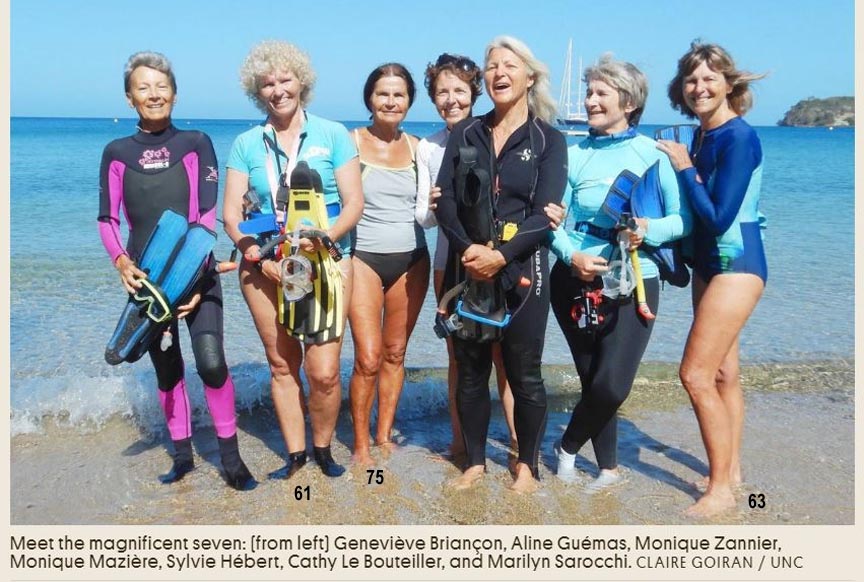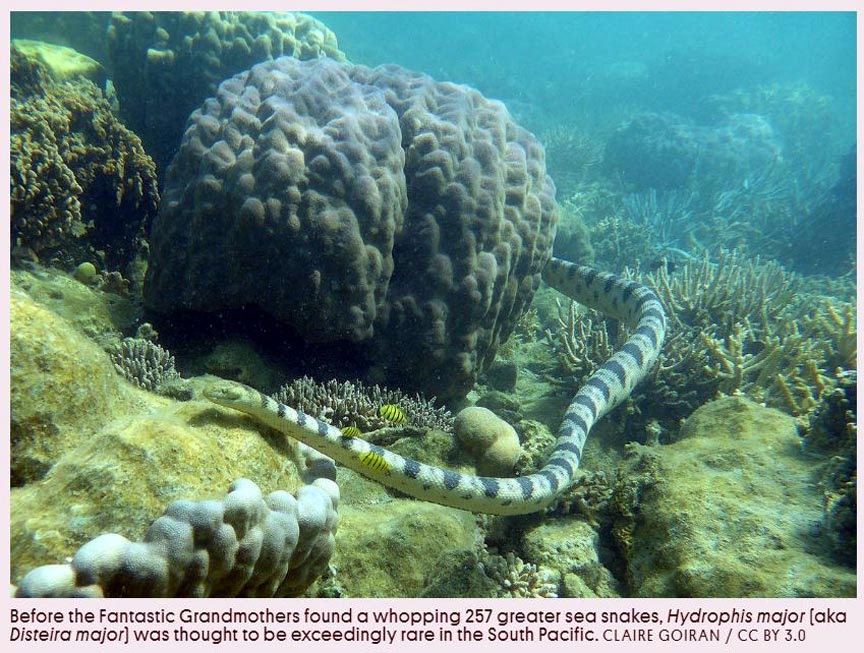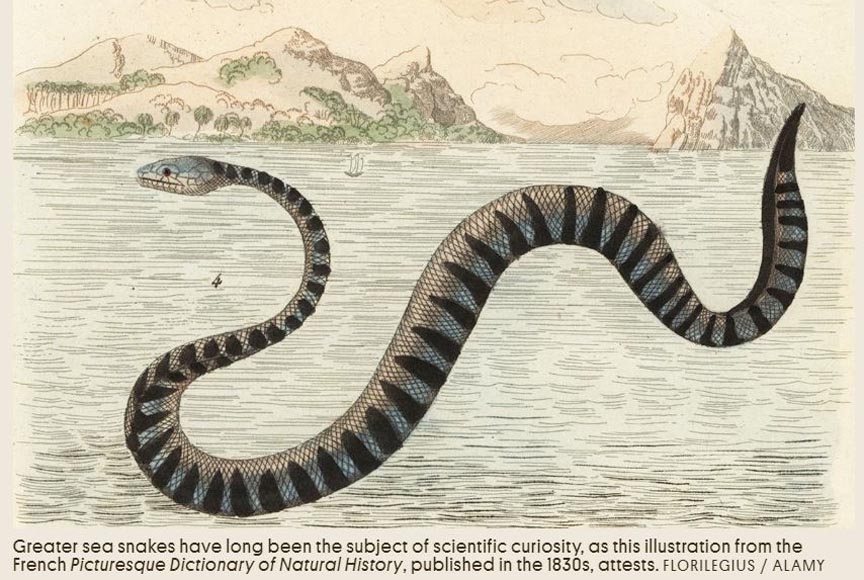|
The future is unwritten
Join Date: Oct 2002
Posts: 71,105
|
Jan 30th, 2020 : Snorkeling Grannies
Every morning seven grandmothers, aged 60 to 75, meet at the beach and snorkel together for about two miles gathering data
on feeding habits, mating habits, and fang count of the most badass sea snake in the world. The snakes marking pattern on the
tail is unique so the ladies snap pictures of each snake to make sure they’re not counting the same snake twice, also can be
identified later. The snakes are extremely lethal but not aggressive and only eat Catfish so the grannies can shadow them pretty
closely. They have managed to catalog 257 Greater Sea Snakes in 2 years in addition to the wealth of data.

Quote:
NEW CALEDONIA IS AN ARCHIPELAGO of a dozen islands in the Coral Sea, about a thousand miles off the east coast of Australia. Rich in thriving, colorful marine life and home to one of the two most extensive coral reef structures in the world, the gigantic tropical lagoons here—a UNESCO World Heritage Site—attract tourists for scuba diving and scientists for research.
For the latter, sea snakes are the star attraction. In fact, says Claire Goiran, a marine biologist at the University of New Caledonia, the Baie des Citrons—a small bay off the archipelago’s capital, Nouméa, that’s framed north to south by free-standing coral caves and arches—is one of the best spots on the planet for observing sea snakes of all sorts.
But not all of the snakes are easy to find. One species, called the greater sea snake—the five-foot long Hydrophis major (also known as Disteira major), a venomous, lethal serpent colored in shades of green-and-black blotches—had been sighted only six times in Goiran’s 15 years of research here, and was, until recently, thought to be very rare in the South Pacific.
|

Quote:
Prior to the grandmothers’ contributions, little was known about them, and data on their lifestyles were scarce. The grandmothers’ research results—which Goiran describes as “astonishing”—recently led to a paper published in the journal Ecosphere.
The grannies entered Goiran’s orbit in 2017, when the marine biologist, then researching a smaller species of sea snake, bumped into an old friend from the local diving center named Aline Guémas, while the two were out snorkeling. When Goiran mentioned the trouble she’d been having finding greater sea snakes, Guémas, who is 61, offered to help. She invited some of her retiree friends to join her, and had soon gathered a task force clad in snorkels and fins.
“Before I realized what was going on, I had this team of seven grandmothers working for me,” says Goiran. “Not all of them knew each other before, but they became good friends.”
|

Quote:
What began as a helping hand for Goiran soon became a full-fledged, methodical citizen-science project. Every morning, including weekends, the Fantastic Grandmothers would meet at 8 a.m. (8:30 in winter) to inspect the reefs in the bay—swimming nearly two miles a day, taking photos of any snakes they saw, and following them as they fed.
The grandmothers have proved to be skilled and dedicated to marine-biological research. “It is much easier to work with grandmothers than with students,” says Goiran. “When I work with students, I have to take care of them. Grandmothers take care of themselves and of each other.”
Baie des Citrons is now the Fantastic Grandmothers’ favorite place to snorkel, given its exceptional biodiversity and number of underwater habitats. Nor do the grannies look only for sea snakes. They also seek out frogfish, octopus, cuttlefish, and sea slugs. Sometimes they even hunt for zebra-shark eggs. Turning their hobby into fruitful scientific research has been an honor, they say. And a soothing balm in their own lives. “I feel calm and weightless [in the water],” Zannier says. “All the worries stay on the land.”
|

Quote:
In learning about sea snakes, they’ve also learned about themselves. “Before I was part of this research program, I was scared of snakes, marine and terrestrial,” says Guémas. “Dr. Goiran taught us to understand and love them. Now when I take photos, I spend time observing their behavior, the way they swim, how they forage and breathe.”
Another granny, 63-year-old Marylin Sarocchi, agrees. “Now I find [sea snakes] beautiful, undulating along the reef. I talk to them. Before, I used to run away from them.
|
So evidently long periods of snorkeling starves the brain of some of it’s normal oxygen requirement resulting in affection for snek. 
Sad, truly sad.
link
__________________
The descent of man ~ Nixon, Friedman, Reagan, Trump.
|